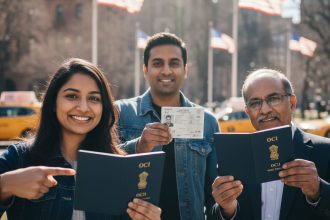The USA is home to nearly 1.28 million NRIs and 3.18 million PIOs. Most of them earn passive income in the form of interest on bank deposits/accounts, dividends on investments, or from business ventures in India. And if this overall income exceeds 2.5 lakhs (tax-free income), filing of tax return becomes mandatory. Are the income tax rules, rates and exemptions for NRIs different from Indian residents? Broadly speaking, yes.
Although all Indian citizens, residents or non-residents, are subject to the Income Tax Act of India, their residency status plays a key role in determining their tax liability and the extent of taxation. Firstly, NRIs are taxed only on the income earned/deemed to be earned or accrued from sources in India. They aren’t obligated to pay tax on their overseas earnings or declare foreign assets.
Secondly, the India-US tax treaty provides relief from double taxation for NRIs in cases where both nations hold a legal right to tax certain forms of income. As an NRI working and living in USA, you need to know when to leverage the US-India tax treaty to cut down the tax burden. Here’s your guide to key aspects of NRI taxation in India and US-India tax agreement.

Determining your tax residency status for the year
Knowing your residence status for tax purposes is the first step in navigating the intricacies of the tax system. Both India and USA have distinct criteria to ascertain an individual’s tax residency status for a particular year. It is possible for you to be considered a tax resident of India and USA in the same tax year due to overlapping criteria; subjecting you to taxation in both countries. This is where the India-US tax treaty, with provisions such as residency tie-breakers, tax credits, exemptions and deductions, comes to your rescue. But before that, let’s understand the residency status.
In general, tax payers in India are classified as ordinarily resident, not ordinarily resident and non-resident based on the duration of their stay in India during a financial year. As per Section 6 of the Income Tax Act, you are considered a tax resident of India if you stay in India for 182 days in a financial year. PIOs and NRIs working in the USA maintain their non-resident status for tax purposes if their visit to India doesn’t exceed 181 days.
The Finance Act, 2020 introduced some amendments to the Section 6, and according to it, an Indian citizen earning more than INR 15 lakh rupees (from sources in India) is deemed to be a tax resident of India if his/her stay in the country exceeds 120 days in a year and 365 days in the preceding 4 years. This is applicable for those who aren’t liable to pay tax in any other country.
NRI Taxation in India: Taxable income for NRIs
What is the definition of taxable income in case of non-residents? Taxable income for NRIs is defined as any income generated, received and accrued or deemed to be generated, received and accrued in India. It includes salary, income earned on properties, business ventures and capital gains on assets in India as well as income from ‘other sources’, meaning dividends on shares, mutual funds etc., and interest earned on bank deposits/accounts. Interest received on Non-Resident External (NRE) and Foreign Currency Non-Resident (FCNR) accounts is tax exempt whereas interest received on a Non-Resident Ordinary (NRO) account is taxable.
How does US-India Tax Treaty benefit Non-Resident taxpayers?
US-India Tax Treaty, a Double Taxation Avoidance Agreement (DTAA) between the nations, provides a framework for cross-border taxation by laying out rules and mechanisms to prevent double taxation on the same income. It also has certain advantages for non-resident taxpayers in India; the biggest benefits being relief from double taxation and the reduced rate of taxation that applies for NRIs in certain cases. Non-resident taxpayers can either opt for the IT slab rates or the treaty rate, whichever is lower.
For example, the tax levied on income earned from Indian sources goes up to 39% as per income slab rates for NRIs. Under the US-India tax treaty, such income is taxed at 20%. The treaty also allows NRIs to claim tax credits in the USA for taxes paid on income earned in India. If the tax is deducted at source (TDS), then NRIs can claim credit for TDS against the total tax liability in India. However, to seek the US-India tax treaty benefits, NRIs are required to furnish certain documents such as tax residency certificate (TRC), Form 10F, non-permanent establishment (PE) declaration among others.
Are there any downsides of US-India Tax Treaty for NRI taxpayers?
The treaty that protects NRIs from being taxed twice on the same income in both India and USA is essentially beneficial for non-resident taxpayers. There are no major downsides as such, but you may sometimes find the tax rate in India for certain types of income to be less than the tax rate applicable under the treaty. For example, dividend income from investments in Indian companies is taxed at 20% as per Income Tax Act whereas this tax percentage is 25% under the US-India tax treaty terms. In this case, NRI taxpayers may choose to go for local tax rates, which is more advantageous for them.








